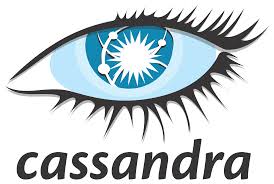The variety of applications it can be used for. DatabaseA database is an organized set of information that allows you to store, Manage and retrieve data efficiently. Used in various applications, from enterprise systems to online platforms, Databases can be relational or non-relational. Proper design is critical to optimizing performance and ensuring information integrity, thus facilitating informed decision-making in different contexts.... by Cassandra configure it as an option to be paid attention by the institutions interested in the Internet of Things and associated applications, tracking and monitoring of user activity in their interaction with products or services, recommendation engines and social media analytics. For its possibilities, Highly recommended for companies in the retail sector. that have electronic commerce or want to use it for their applications or catalogs, helping to improve the level of support.
What is the Cassandra database
Cassandra es un sistema open source distributed Database management designed to handle large amounts of data on many servers for convenience, providing high availability without any single point of failure.
Cassandra Database offers a very high level of compatibility for clusters spanning multiple data centers, with the ReplicationReplication is a fundamental process in biology and science, which refers to the duplication of molecules, cells or genetic information. In the context of DNA, Replication ensures that each daughter cell receives a complete copy of the genetic material during cell division. This mechanism is crucial for growth, Development and maintenance of the organisms, as well as for the transmission of hereditary characteristics in future generations.... asynchronous without a teacher, enabling low latency operations for all clients. Even though one of its strengths is performance. Apache Cassandra is designed to be agile and always available for any demand of the internet of things, the web and mobile applications, providing companies with the necessary support and their customers an optimal service.
At the operational level, It is a simple alternative that enables institutions to integrate information from the Cassandra database into existing data infrastructures.., enabling business processes to drive the value of big data, even working in real time with hundreds of different data sources.
Main features of the Cassandra database
Cassandra Database offers, for its characteristics, a series of Benefits that optimize the potential of online business applications., among those who stand out:
- Scalable architecture: thanks to a masterless design, in which all nodes are equal, what offers Operational simplicity and ease Horizontal scalabilityHorizontal scalability refers to the ability of a system to expand by adding more nodes or units rather than increasing the power of existing ones. This approach allows for a greater volume of data and users to be handled, Improving availability and fault tolerance. It is commonly used in cloud architectures and distributed systems, as it facilitates incremental growth and optimizes performance without compromising stability.....
- Active design from start to finish: What on all nodes can be written and read.
- Performance on a linear scale: the ability to add nodes without slowing down leads to performance improvements.
- Continuous availability: eliminates single points of failure and provides constant uptime.
- Transparent fault detection and recovery: for nodes that cannot be easily restored or replaced.
- Flexible and dynamic data model: supporting modern data types for fast reading and writing.
- Strong data protection: a record design of confirmation prevents data loss and creates backups to aid restoration keeping data safe and secure.
- Adjustable data consistency: therefore, Cassandra Database provides support for data consistency in a clusterA cluster is a set of interconnected companies and organizations that operate in the same sector or geographical area, and that collaborate to improve their competitiveness. These groupings allow for the sharing of resources, Knowledge and technologies, fostering innovation and economic growth. Clusters can span a variety of industries, from technology to agriculture, and are fundamental for regional development and job creation.... Widely distributed.
- Data replication across multiple centers: is a cross-sectional data center (in different geographic areas) who receives the support of multiple availability zones in the cloud for both writing and reading.
- Data compression– Ensures that data will be compressed by up to 80% without expensive resources.
- CQL (Cassandra query language): a language similar to SQL that eases the transition from a relational database.
Related Post:







